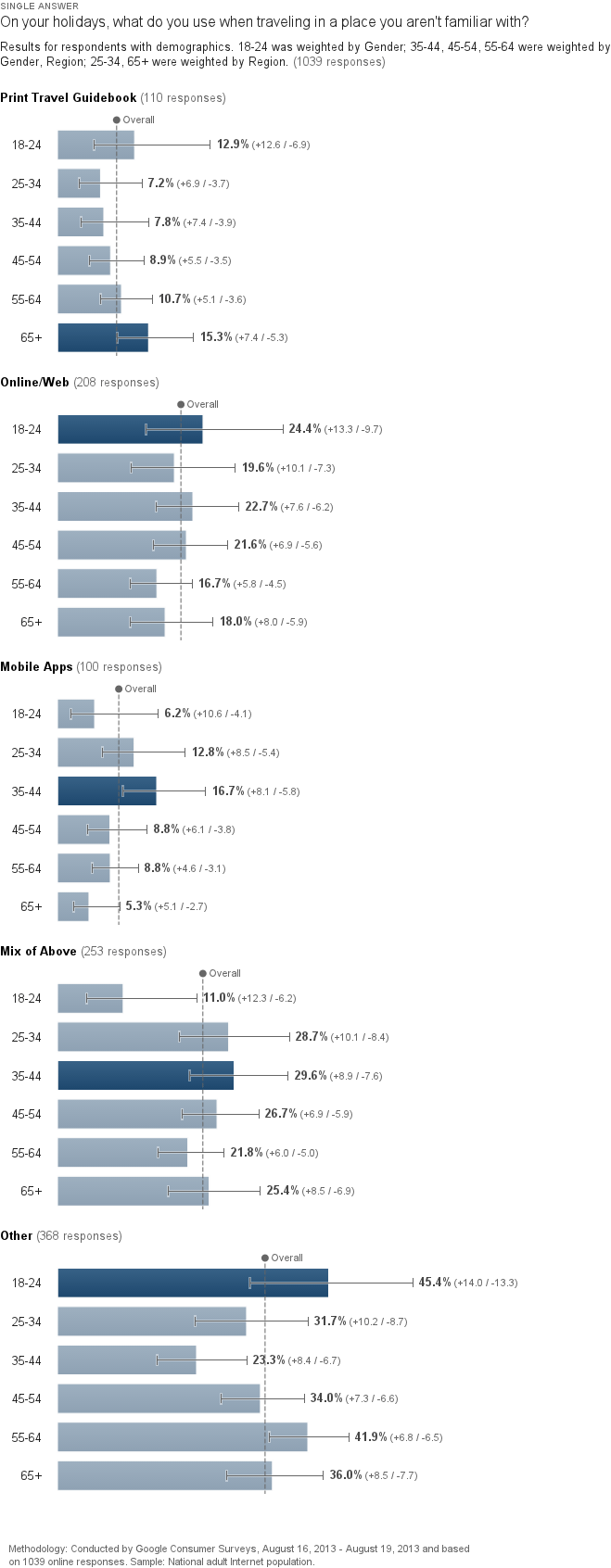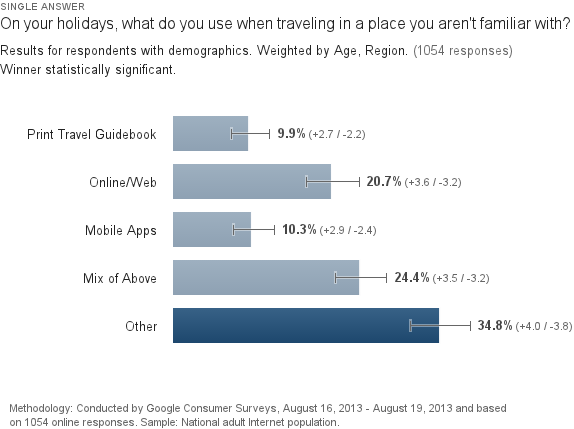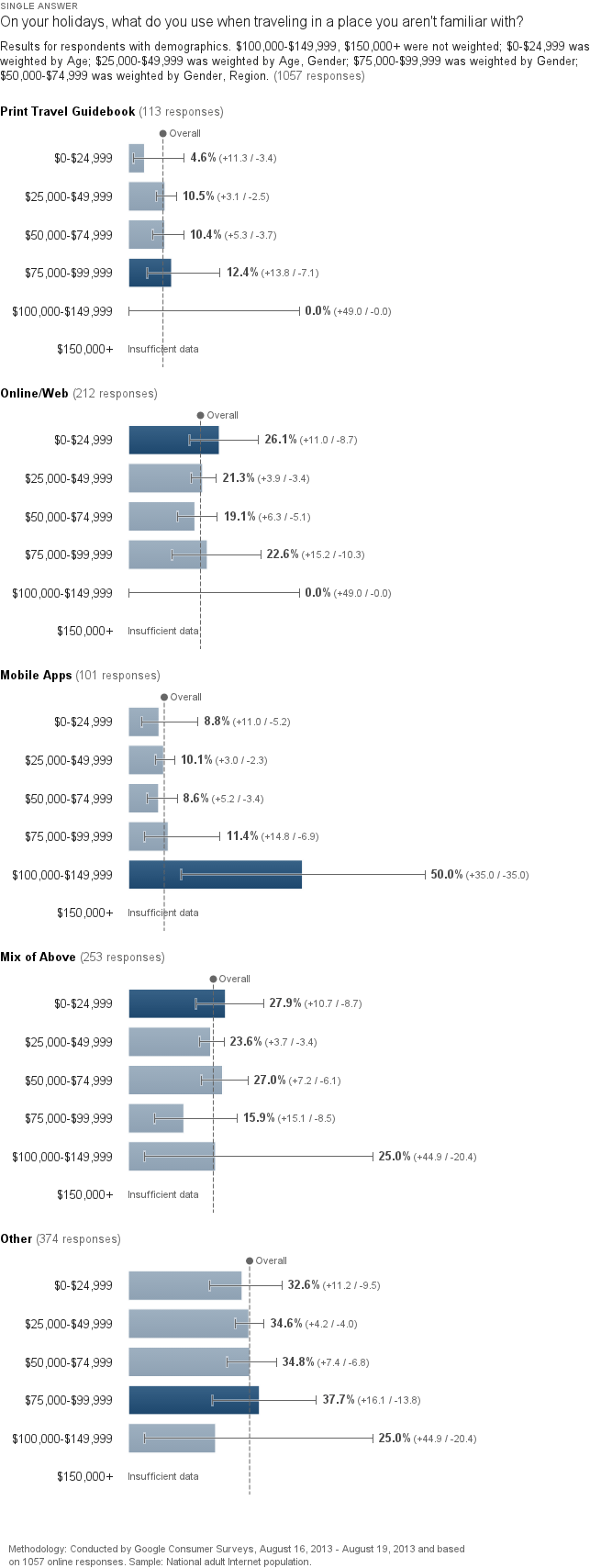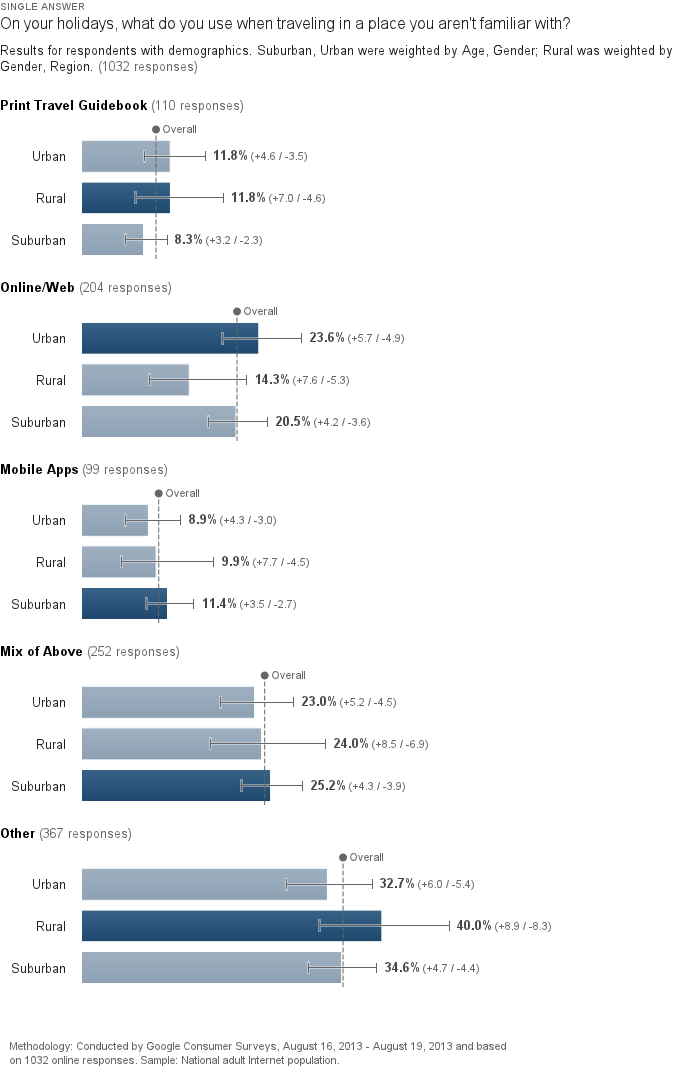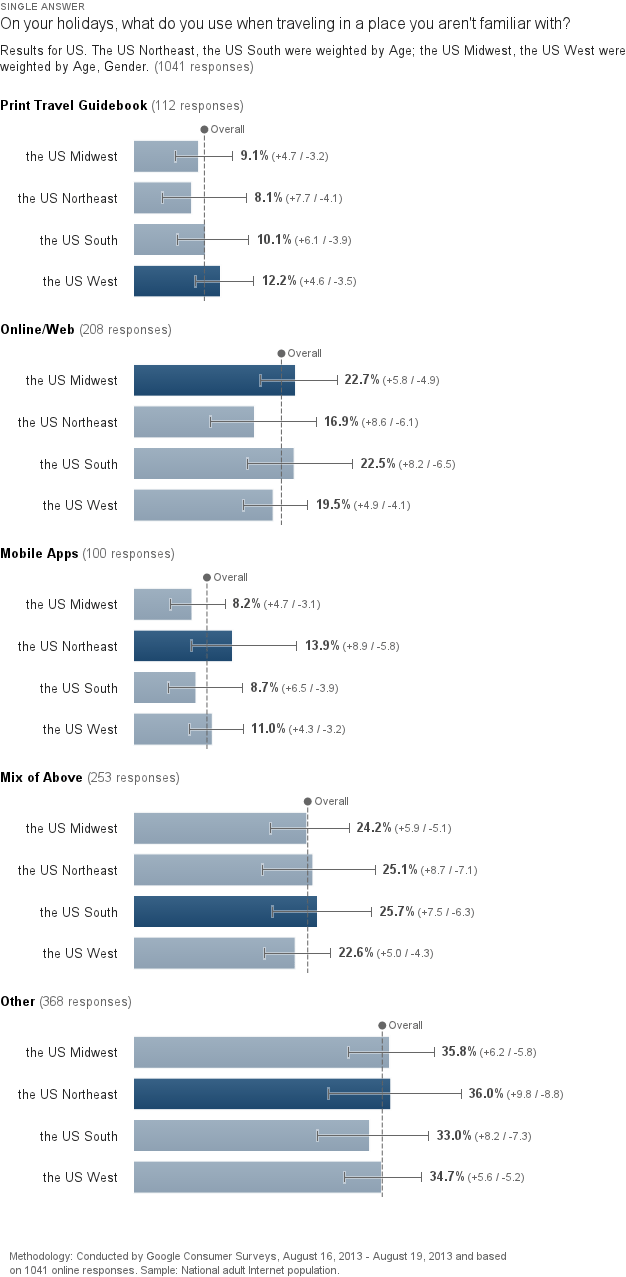Skift Asks: Do You Still Use a Print Guidebook When Traveling?

Skift Take
Editor's Note: Last month we launched a new weekly survey series "Skift Asks", to test out the assumptions travel industry insiders have on various consumer travel issues, trying to bridge the disconnect between the industry and consumers. See previous Skift Asks here.
Important: The survey is not done on Skift readers, but general U.S. internet adult population, through Google Consumer Surveys.
This week we asked consumers a trip planning question: What do you use for travel information when traveling in an unfamiliar place on your holidays? And the results are interesting, to say the least. Print guidebooks are still used by 10 percent of the population asked, almost the same as those who use mobile apps during travel. Online sources are used by about 20 percent, while a good 25 percent use all three sources: print, online, and mobile.
The puzzling part is "Other", which we put in just in case, and that ended up getting the highest response. Part of it is possibly people confused with the wording of the question, and part of it is likely people relying on other people for travel information: hotel concierge, friends, travel agents, etc. Or for that matter, relying on themselves to figure it out, using maps.
This single-question survey was administered to the U.S. internet population from Aug 16-Aug 19, through Google Consumer Surveys, with 1504 responses. The methodology is explained here.
The key takeaway: Using digital tools in-market in travel is the future, though mobile travel information sources are still in infancy among the general public beyond early adopters. Print guidebooks' decline and slipping marketshare may stabilize at a certain point, possibly around the 10 percent mark.
Key takeaway: Women love doing lot more travel research, period.
Key takeaway: Mobile apps are still a rich person's indulgence while traveling and still very early in the lifecycle of mobile adoption.
Key takeaway: Unclear.
Key takeaway: People in Northeast like mobile apps more while traveling.
Key takeaway: Older people still like guidebooks, while the 35-44 segment prefer mobile apps more.